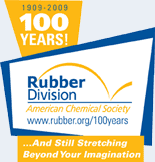![[ Visit ACS Rubber Website ]](images/logo.jpg) |
|
Centennial Elite SponsorsBecome a Centennial Elite Sponsor |
82 Insulation Compounds Based on Blends of EPM and EPDM Polymers For Wire And Cable ApplicationsWednesday, October 14, 2009: 8:30 AM
327 (David L. Lawrence Convention Center )
This study compares conventional EP(D)M elastomers, metallocene EP(D)M elastomers, and their binary blends in filled compounds designed for low voltage (
Many of the compounds evaluated have a favorable combination of properties that indicates good potential for their use in medium voltage wire and cable insulations. The results of this study should be of significant interest to wire and cable insulation compounders pursuing the development of novel compounds with enhanced properties and lower cost. |









